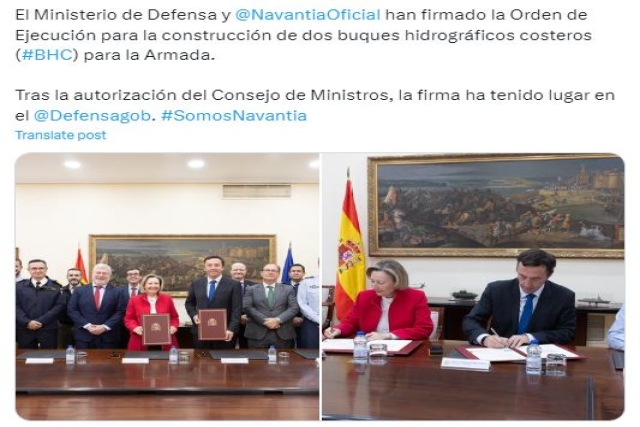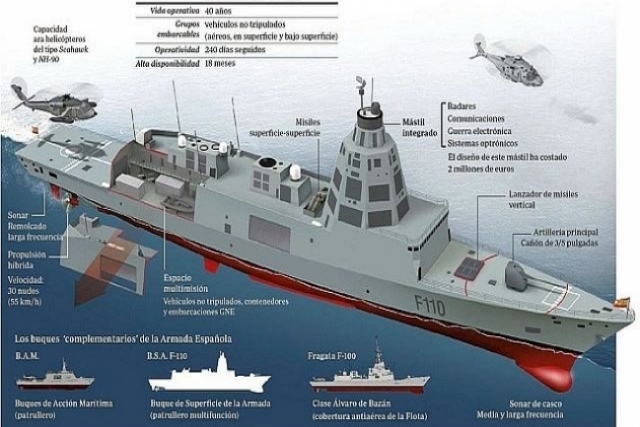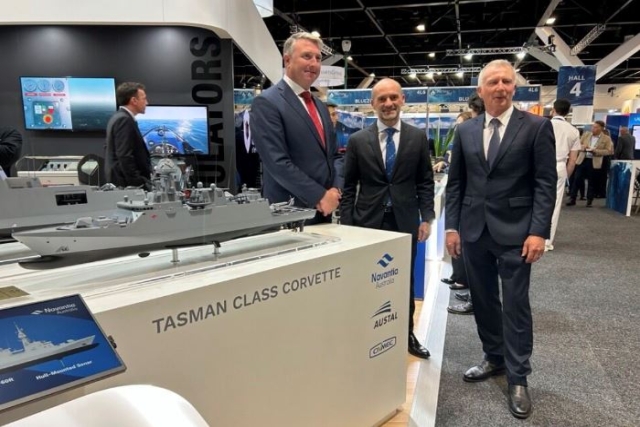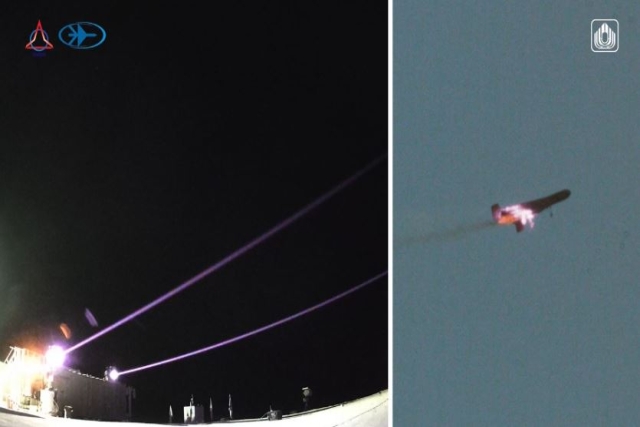Spain’s Navantia Participates in Six EDF 2023 Projects Valued at €520M
Initiatives include advancements in Mine Warfare, Anti-Submarine Warfare, Anti-Drone Technologies, Patrol Corvette development, laser communications, and naval manufacturing.

Navantia, the Spanish state-owned shipbuilding company, will be involved in six research and development projects funded by the 2023 European Defence Fund (EDF).
The European Commission has announced the selection of these projects, which have a combined value of €520 million.
The projects span several critical areas of technological advancement in defence. Notably, Navantia leads two projects: OPTIMAS, which focuses on developing secure high-speed optical communications links essential for unmanned vehicle operations, and ADMIRABLE, which aims to innovate materials to enhance the survivability and efficiency of naval platforms.
The E=MCM, SEACURE, and E-CUAS projects focus on crucial EU security capabilities: Mine Warfare, Anti-Submarine and Sea-Bottom Warfare, and Warfare against Aerial Drones (UAS), respectively. These areas have gained relevance due to new weapons and threats, necessitating the development of new technologies and systems.
The EPC2 project will address the second phase of the European Patrol Corvette within the PESCO project, with a consortium including Naviris, Fincantieri, Naval Group, Navantia, and Hydrus. It aims to complete the initial design from the first phase, currently managed by OCCAR, and build prototypes of two new-generation multi-role modular corvettes: long-range multi-purpose and full-combat multirole. The project includes port testing of prototypes and developing a ground-based facility for system testing and qualification.
Navantia leads the OPTIMAS project, which aims to develop a prototype high-speed free-space laser communications system for satellite constellations (LEO, MEO, GEO), with multi-domain applications and quantum key distribution (QKD) capability. The project will demonstrate a high-speed optical link between an unmanned aerial vehicle and a low-orbit satellite, involving 12 entities from seven countries, including Spain's SENER, University of Vigo, DAS PHOTONICS, Instituto de Astrofísica de Canarias, and the Centro de Láseres Pulsados (CLPU) in Salamanca.
The ADMIRABLE project focuses on advanced manufacturing technologies and composite-based materials to improve the operation and reduce the vulnerability of future naval platforms. It aims to develop multi-functional materials and optimize manufacturing processes to enhance the survivability of European ships. Navantia leads this project with participation from 10 entities across five European nations, including Spanish companies FIDAMC, DAS PHOTONICS, and MICROMAG 2000.
Navantia participates in the E=MCM project, which aims to develop a scalable System of Systems for Mine Warfare against threats like drifting, moored, and buried mines. It will feature autonomous vehicles, smart platforms, and decision support functions, with a sea demonstration involving Navantia's NAIAD system, a USV with minesweeping capability, and UUV deployment. The project is led by Naval Group Belgium and involves 21 entities from 11 nations, including Spain's Navantia and SAES.
The SEACURE project is dedicated to Anti-Submarine and Seabed Warfare, focusing on developing an integrated System of Systems based on unmanned vehicles for critical infrastructure protection. It includes a modular, agile, and flexible system integrating Command, Control, Communications, and Intelligence (C4I) capabilities, unmanned vehicles across different domains (air, surface, and submarine), and their corresponding payloads and effectors. Thales France leads the consortium of 35 entities from 13 countries, including Spain's Navantia.
The E-CUAS project aims to counter class I UAS systems, including military-grade drones operating alone or in groups. The system can protect critical infrastructures, both fixed and mobile, and naval platforms. It integrates various sensors, effectors (hard kill and soft kill), command and control, cybersecurity, and network and communications infrastructure. Leonardo (Italy) leads the project, involving 24 companies from 13 countries, including Spanish companies Navantia, Indra, Escribano, Aertec, and INTA.














